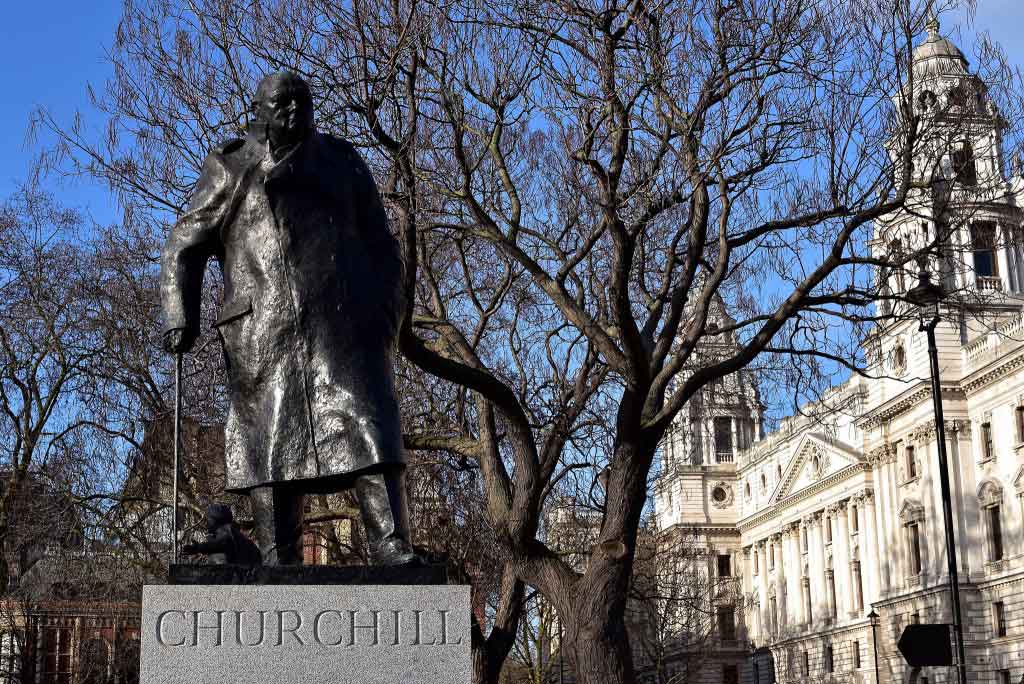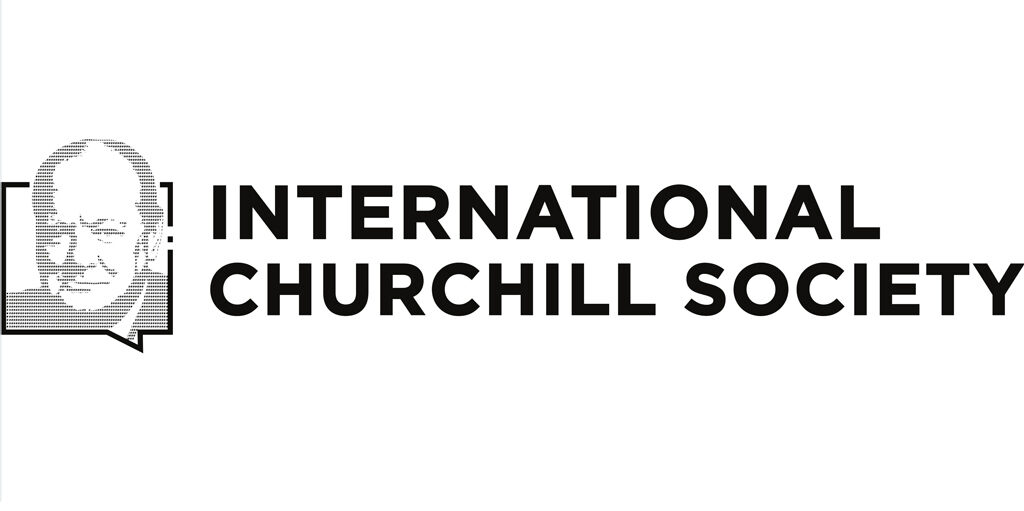
Finest Hour 141
Book Collecting: The Cohen Corner – Colonial Library Issues of the Malakand Field Force

Winston Churchill, Parliament Square, London © Sue Lowry & Magellan PR
June 9, 2013
Finest Hour 141, Winter 2008-09
Page 56
Book Collecting: The Cohen Corner – Colonial Library Issues of the Malakand Field Force
By Ronald I. Cohen

2025 International Churchill Conference
Mr. Cohen, of Manotick, Ontario, is the author of the seminal Bibliography of the Writings of Sir Winston Churchill (Continuum, 2006), the standard bibliography of Churchill’s work. All “A” numbers (“A1.2.f,” etc.) refer to the Cohen bibliography.
A fellow bibliophile, Marc Kuritz, wrote to say that he had an 1898 copy of Churchill’s first book, The Story of the Malakand Field Force 1897 (to give it its longest title) which did not seem to fit into any of the “A1” sub-entries in my Bibliography. Marc loaned me the volume to examine.
While I was pleased to find that I had indeed included it in the Bibliography, I had only ever seen a single copy of this extremely rare variant. (The other is in the New Zealand National Library.) It is the scarcest appearance of Churchill’s first title, one of only forty-six copies of domestic sheets transferred to the Colonial Library issue (Cohen A1.2.f). But I am getting ahead of myself. I will deal with that copy’s characteristics anon.
Most Churchill collectors are grateful to own any edition of the Longmans Malakand, domestic or colonial, because there were so few. The book was first published on 14 March 1898. The second (Silver Library) edition, with hundreds of revisions, was published on 1 January 1899; the last printing was in February 1901 and sales trickled out until June 1912, when 663 copies of that printing remained on hand at the House of Longmans.
The First Edition
Printed on rather thick, white wove paper for the domestic market, and much thinner, white laid paper for the colonial markets, the first edition was produced in two different forms— for good reason. The laid sheets were both thinner and lighter, which reduced the size of the colonial copies, making them more economical to ship to far-off places than the larger domestic copies.
The domestic issue (A1.1.a) was published in a solid moderate yellowish green binding case. Cased copies of the Colonial Library issue (A1.2.a), on the other hand, had a much more elaborate, illustrated front cover. Printed blackish blue on a greenish grey background, it depicted a schooner at sea (the Longmans’ logo) over a fanciful seaweed or floral design at the foot. There was also a softbound issue in wrappers.
Churchill, stationed in India at the time of publication, had asked his uncle, Moreton Frewen, to proofread the book before publication. Frewen’s ineffective effort is evident in the “gross & fearful” blunders found by Churchill in the proofs he read in India eight days after publication.
When the young author finally saw a finished copy of the book after publication, he described a number of the errors as “unpardonable” and referred to a “great number of emendations [by Frewen] which have made my blood boil.” He cabled the publisher but he was of course too late; his only recourse was to have errata slips printed and inserted in the volumes.
There were two printings of the colonial issue in March 1898: the first, numbering 2000 copies, and the second, numbering 1000 copies. Although I have examined many copies of the Colonial Library issue, I have been unable to discover any characteristics that would distinguish first and second printing copies.
Consequently, all observations in this article apply to all printings of the Colonial Library issue of the first edition.
The Errata Slips
There were two styles of errata slips. The first was printed in India, at Churchill’s anxious behest, on or about 7 April 1898 (see A1.2.c). That slip included sixteen errata and was printed on white laid water-marked paper. There are no details regarding the number of such slips printed, but they are only found in Colonial Library copies sold in India. Churchill was reimbursed 20 rupees for his expenses, about 40 percent of what he had claimed from his British publisher.
The second errata slip was printed by Longmans Green in London on 19 April 1898 (see A1.2.d). About 1700 of these were inserted in both the domestic and Colonial Library copies that remained on hand as of the date of their availability.
The Variant Page 231
Some colonial copies, but no domestic volumes I have encountered, have a page number 231 in which the “1” is raised. The level of the “1” migrates above the base level of the three digits which comprise the page number, as though the type had shifted in the course of printing. The movement of the slug seems to have been progressive: the distance from the descender line of the “3” to the mean line at the top of the “1” varies between just over 3 mm to as much as 5.7 mm.
The Canadian Colonial Library Issue
There was a Canadian issue of the Colonial Library sheets, cased, and easily distinguished by the name of the Canadian publisher, Copp, Clark Co., Limited, on the spine and the title page (A1.2.e).
The Wrappers Issue
There was also a Colonial Library issue in paper wrappers, printed dark purplish blue on pale green (A1.2.b) to a uniform design used on other Longmans colonial titles in wrappers. Although the majority of the colonial issue, 1675 of the 3000 copies printed, were “sewn” rather than “cased,” their perishable format has made them very rare today.
The Prize of Prizes: the Colonial Library Issue of Domestic Sheets
On 13 October 1898, Longmans Green apparently had a small surplus of domestically-destined sheets and an urgent need for colonial copies. So the publisher assigned forty-six sets of the domestic sheets to the Colonial Library (A1.2.f). They were bound in cases identical (in a design sense) to those of the standard Colonial Library issue, but they are 30 percent thicker (39.1 rather than 30.6 mm) in order to accommodate the thicker domestic sheets. The paper is, of course, the white wove paper of the domestic sheets but the page size has been trimmed from 191 x 127 mm to 183 x 121 mm.
It was of course necessary to provide these copies with a new title page, since the books were intended for sale in the Colonies, and the new title page was printed on wove paper to match the domestic sheets in feel and (subtle) appearance. It is, however, surprising (to me, at least) that the middle initial “L.” was dropped from the author’s name (although it remained on the front cover of the volume). This also matched the title page of the first printing of the Silver Library edition in 1899, although the excised letter “L.” returned to the title page of the 1901 second printing of the Silver Library edition.
Since the title page was replacing the domestic title page, already integrally included in the first signature of the domestic copies, the original title page was “cancelled” and replaced by the Colonial library leaf, which is tipped directly onto the leaf that is pp. v/vi. (A “cancel” is a replacement sheet, glued or pasted to the “stub” of the sheet it replaces.)
Given the date of transfer of these domestic sheets to the Colonial Library, all such copies will include the domestic errata slip (tipped onto page 1 of the Kuritz and New Zealand National Library copies).
The Silver Library Colonial Issue
There were two printings of the Colonial Library issue of the second edition (Silver Library) of the Malakand (A1.4.a and A1.4.b). These are cased in the “Longmans’ Colonial Library” boards rather than the maroon casings that distinguish the domestic Silver Library editions. These too are extremely rare issues. I have discovered no aberrations or variants in these copies, other than the restoration of the “L.” in the author’s name in the second (1901) printing, and the change of date on the title page.
Subscribe
WANT MORE?
Get the Churchill Bulletin delivered to your inbox once a month.



